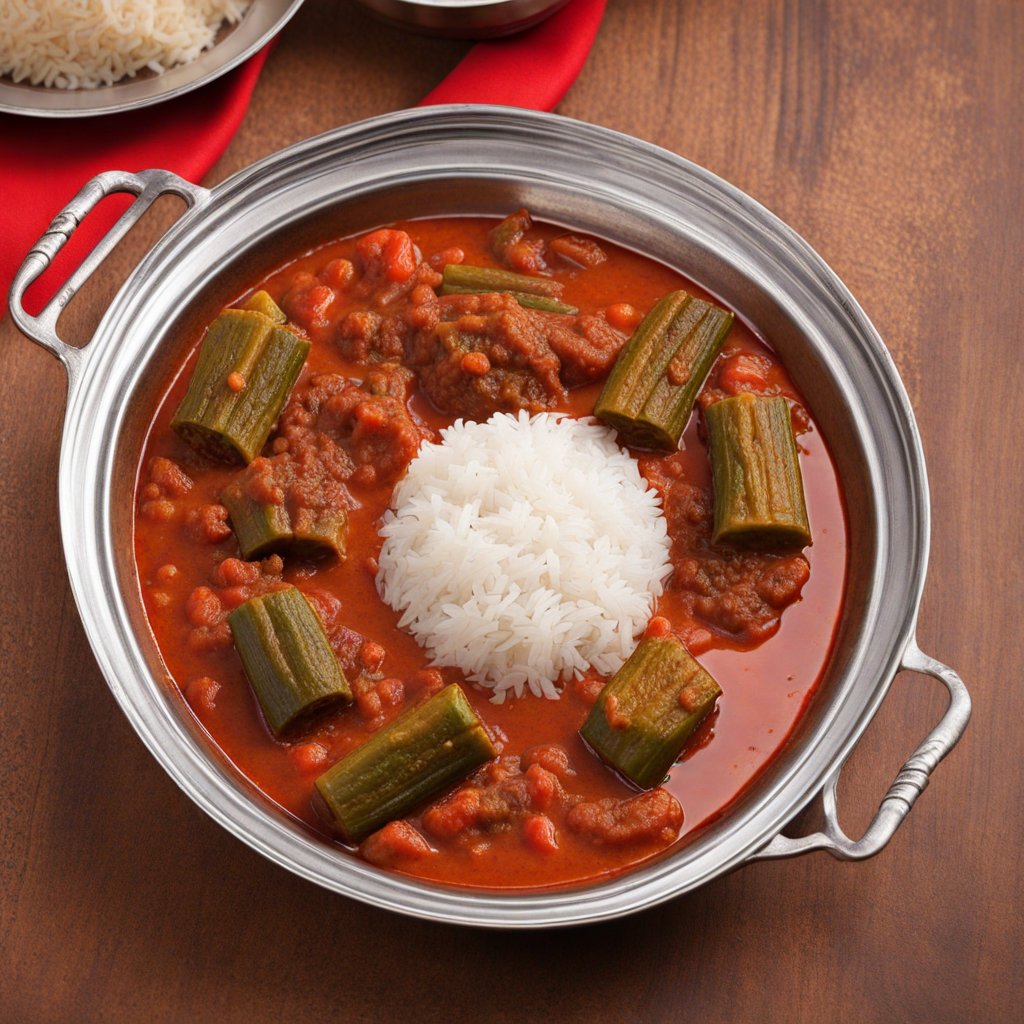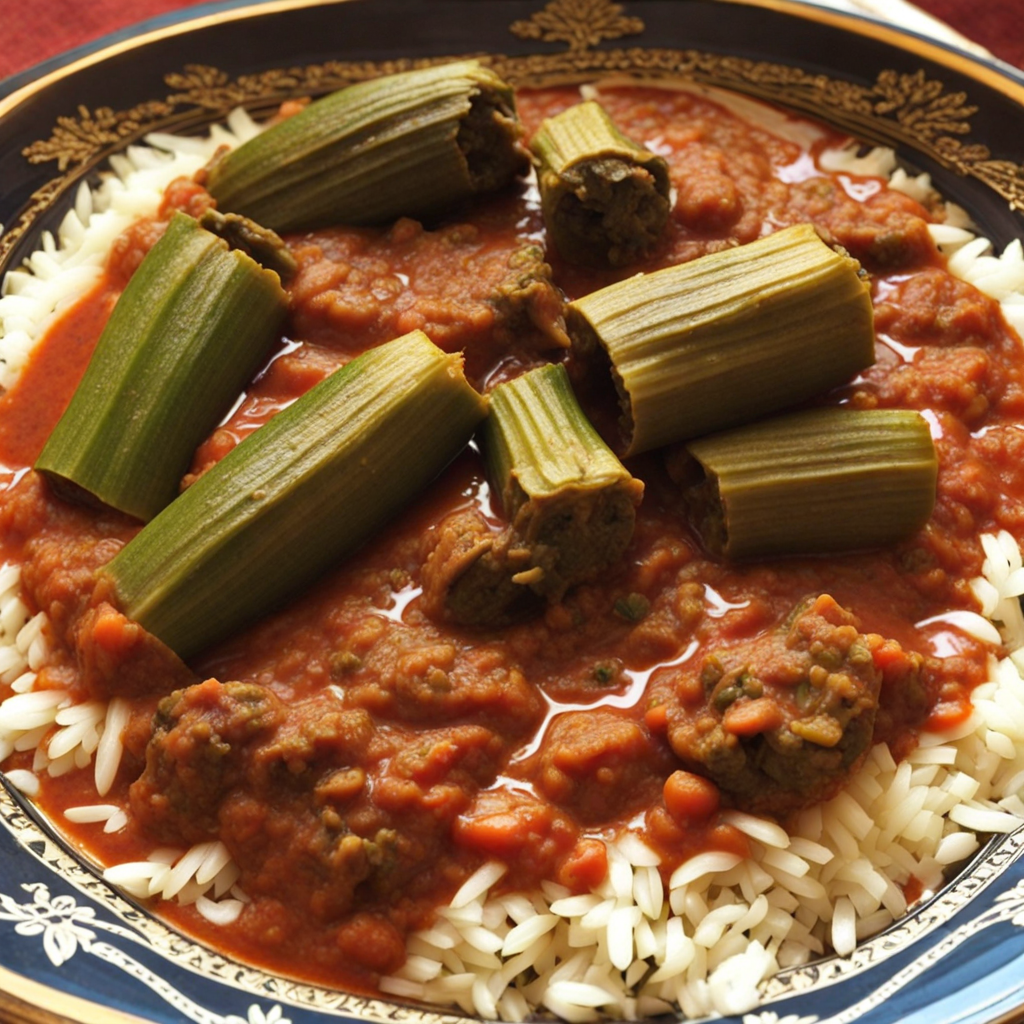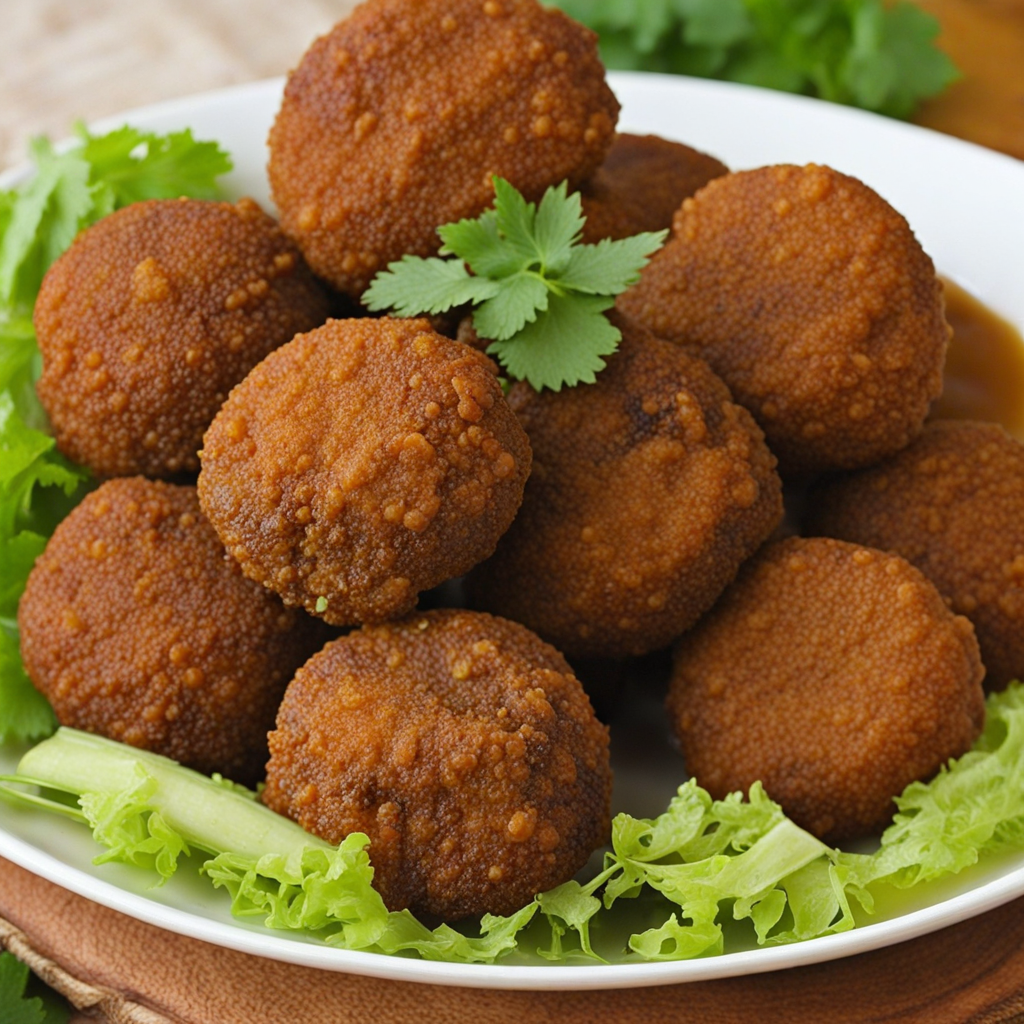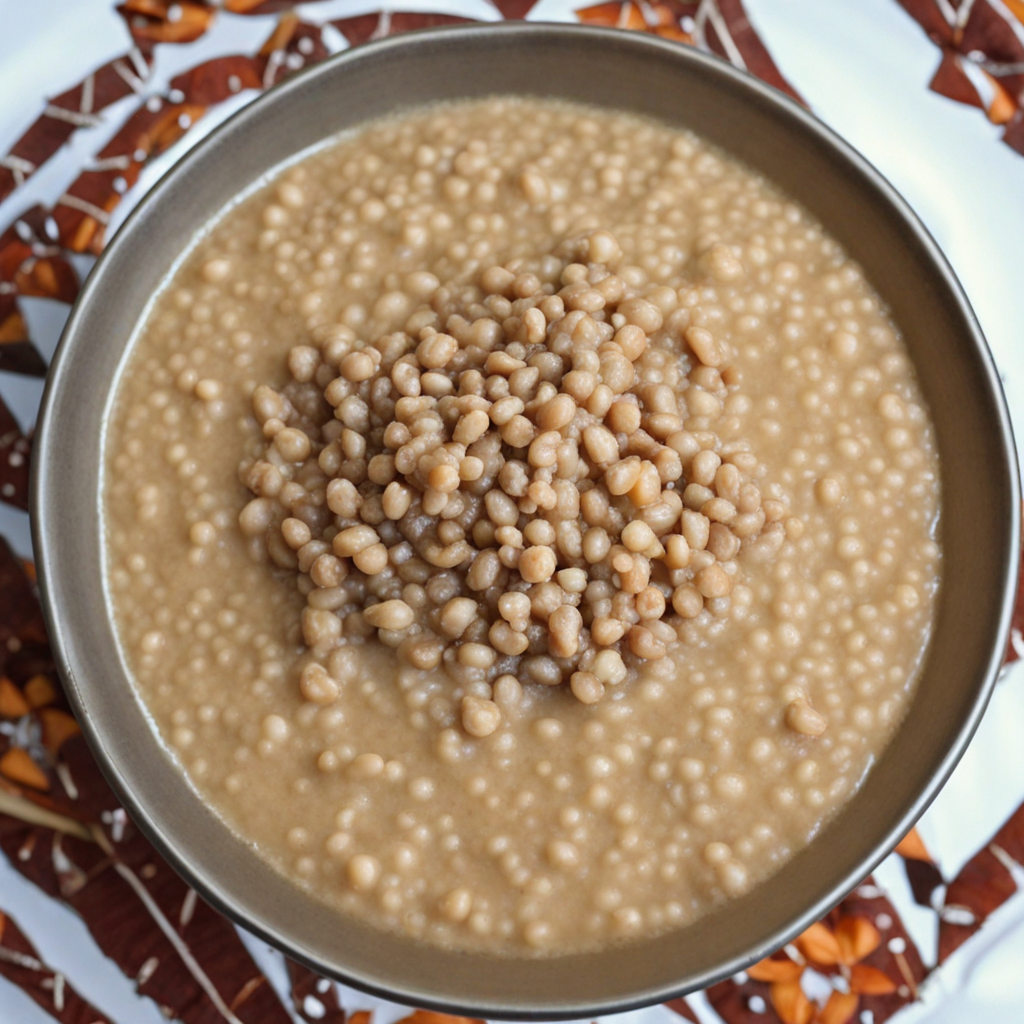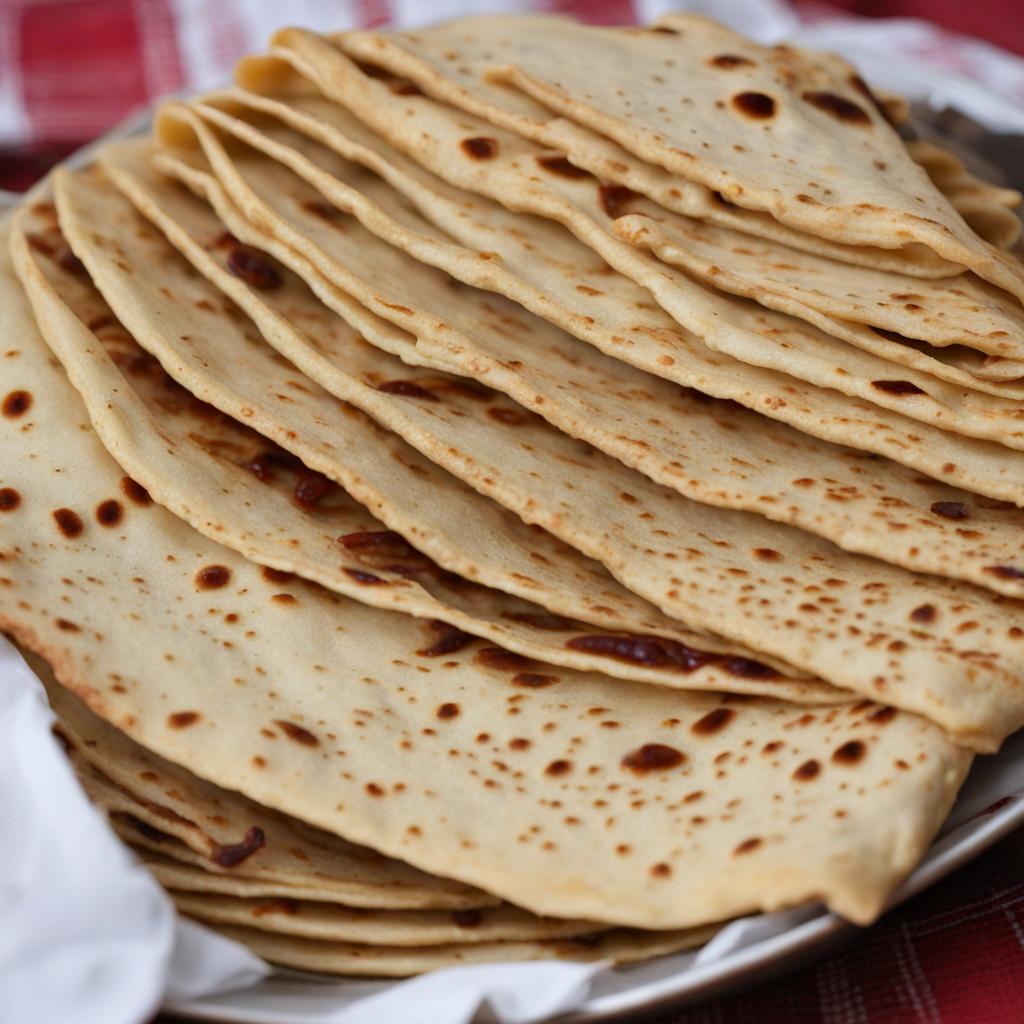Bamia
Bamia, a traditional Sudanese dish, is a delightful celebration of flavor and texture, prominently featuring okra as its star ingredient. The dish is characterized by tender, simmered okra pods that are infused with a rich, spiced tomato sauce. Often enhanced with garlic, onions, and a blend of spices such as cumin and coriander, Bamia offers a depth of flavor that is both comforting and invigorating. The okra's unique texture contributes a satisfying, slightly slimy quality that beautifully envelops the other ingredients, creating a harmonious dish that is both nourishing and hearty. In Sudan, Bamia is typically served with a side of rice or flatbread, allowing diners to savor every drop of the sauce. The combination of the soft, warm okra and the vibrant sauce makes for a delightful experience, as the flavors meld together in each bite. It is common to find Bamia in family gatherings and special occasions, highlighting its role as a dish that brings people together over a shared love for good food. The simplicity of the ingredients, coupled with the rich flavors, exemplifies the essence of Sudanese cuisine. For those looking to explore a new taste, Bamia offers an inviting journey into Sudanese culinary traditions. Its balance of spices and the earthiness of okra create a dish that is both exotic and comforting, appealing to a wide range of palates. Whether enjoyed as a main course or a side dish, Bamia provides a unique opportunity to experience the warmth and hospitality of Sudanese culture through its vibrant flavors and communal dining style.
How It Became This Dish
The Rich History of Bamiya: Sudan's Beloved Okra Dish Bamiya, the Sudanese interpretation of a dish featuring okra, holds a special place in the culinary landscape of Sudan. This beloved food not only tantalizes the taste buds but also reflects a rich tapestry of history, culture, and community. To understand bamiya, one must explore its origins, cultural significance, and the evolution of the dish through time. #### Origins of Bamiya The term "bamiya" is derived from the Arabic word for okra, which is "بامية" (pronounced: bāmīyah). Okra itself is believed to have originated in the region encompassing modern-day Ethiopia, Sudan, and West Africa. Historical evidence suggests that the plant was cultivated as far back as 4,000 years ago. The spread of okra across various regions was facilitated by trade routes and migration, making it a staple in many African and Middle Eastern cuisines. In Sudan, the cultivation of okra thrived due to the favorable climate and fertile soil, particularly in the regions along the Nile. The crop became a significant part of the Sudanese agricultural landscape, leading to its incorporation into local culinary practices. Over centuries, the dish evolved as families put their unique spins on it, influenced by both indigenous practices and the culinary traditions brought by traders and travelers. #### Cultural Significance Bamiya holds a multifaceted cultural significance in Sudanese society. It is more than just a dish; it is emblematic of Sudanese hospitality, communal gatherings, and familial bonds. Historically, bamiya has been served during celebrations, family reunions, and communal meals, representing unity and togetherness. The dish is often prepared in large quantities, inviting family and friends to share in the experience. The preparation of bamiya is often a communal activity, where family members come together to chop the okra, prepare the broth, and cook the dish. This collaboration strengthens family ties and reinforces cultural traditions, making the cooking process as meaningful as the meal itself. In terms of cultural identity, bamiya embodies the Sudanese palate, which is characterized by a rich blend of spices, herbs, and other local ingredients. The dish is typically seasoned with a mix of garlic, onions, and spices such as cumin or coriander, showcasing the influence of both Arab and African culinary traditions. It often features lamb or beef, although vegetarian versions are common, particularly during fasting periods or for those who prefer plant-based diets. #### Development Over Time The evolution of bamiya can be traced through Sudan's historical shifts, including changes in trade, colonization, and globalization. During the Ottoman Empire's influence in the 16th century, Sudan experienced an influx of new cooking techniques and ingredients. This period saw an increased integration of spices and herbs, which enriched the flavor profile of bamiya. In the 19th and early 20th centuries, British colonization introduced Western culinary practices to Sudan. While bamiya remained a staple, the British influence led to the introduction of new cooking methods and the availability of canned goods. This era saw the emergence of convenience foods, which began to alter traditional cooking practices. However, despite these changes, traditional recipes and cooking methods remained resilient within Sudanese households. The late 20th century brought further transformations as globalization affected food culture worldwide. The Sudanese diaspora, particularly in the United States and Europe, began to introduce bamiya to international audiences. This exposure allowed for a fusion of culinary traditions, leading to new interpretations of the classic dish. Restaurants specializing in Sudanese cuisine began to pop up in major cities, showcasing bamiya alongside other traditional dishes like kisra (a fermented flatbread) and mulukhiyah (jute leaf stew). In contemporary Sudan, bamiya has also adapted to modern dietary preferences. As awareness of health and nutrition has grown, many home cooks and chefs have sought to highlight the nutritional benefits of okra, which is high in fiber, vitamins, and antioxidants. This has led to an increased interest in vegetarian and vegan adaptations of the dish, making it accessible to a wider audience. #### Bamiya Today Today, bamiya continues to be a cherished dish in Sudan, often served with rice, kisra, or bread, and accompanied by a variety of salads and pickles. It is a staple in Sudanese households, commonly enjoyed during family meals, special occasions, and communal feasts. The dish is celebrated for its comforting qualities and its ability to bring people together. With the rise of social media and food blogging, bamiya has gained recognition beyond Sudan's borders. Food enthusiasts and chefs around the world are exploring Sudanese cuisine, leading to a revival of interest in traditional dishes. This has sparked a culinary renaissance, where bamiya is being reimagined in innovative ways while honoring its roots. Moreover, initiatives aimed at preserving and promoting traditional culinary practices have emerged, fostering a renewed appreciation for bamiya and other Sudanese dishes. Cooking classes, food festivals, and culinary workshops are increasingly popular, allowing new generations to learn the art of preparing bamiya and other traditional foods. #### Conclusion Bamiya is more than just a dish; it is a symbol of Sudanese culture, history, and community. Its origins trace back to ancient agricultural practices in the Nile region, and its evolution reflects the broader societal changes that have shaped Sudan over the centuries. From its role in family gatherings to its resurgence in modern culinary conversations, bamiya stands as a testament to the resilience of cultural traditions and the enduring power of food to connect people across generations and geographies. As Sudanese cuisine continues to gain recognition on the global stage, bamiya will undoubtedly remain a cherished dish, embodying the flavors, stories, and spirit of Sudan. Whether enjoyed in the heart of Sudan or in a distant corner of the world, bamiya invites all to partake in its rich history and celebrate the cultural significance it holds within the Sudanese community.
You may like
Discover local flavors from Sudan


